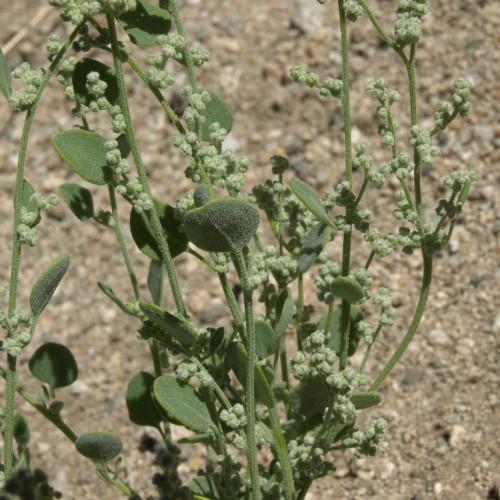
Mealy Goosefoot
Chenopodium incanum var. incanum
Watering:
Minimal
Hardiness Zone:
Sun:
full sun,part shade
Leaf:
Yes
Growth Rate:
Low
Drought Tolerant:
Yes
Salt Tolerant:
Yes
Invasive:
Yes
Care Level:
Medium
watering
Hians Goosefoot (Chenopodium hians) should be watered lightly when it's first planted, making sure not to saturate the soil. After that, provide sufficient and consistent moisture to the plant. Water plants weekly during the growing season, providing about 1 inch of water each week. Add more water during hot weather or periods of drought. Make sure the soil remains moist but not wet. Reduce frequency of watering during the winter months.
sunlight
Hians Goosefoot (Chenopodium hians) is a fast-growing annual plant that does best in full sun. It prefers plenty of direct sunlight to allow the plant to reach its maximum growth potential and provide the best quality leaves. Optimal light levels for Hians Goosefoot range from 6-8 hours of direct sunlight throughout the day, with some shade in the afternoon to prevent leaf burning. Too little light causes the plant to become leggy with weak stems and poor quality leaves, and too much light will cause the leaves to yellow and impair growth. In short season climates, Hians Goosefoot should be planted in a spot where it will receive more direct sun during the cooler months to maximize its growth.
pruning
Pruning for Hians Goosefoot (Chenopodium hians) should be done at the end of the flowering season. This allows the plant to regrow and produce a neat, compact shape during the summer. It is important to remove any dead, diseased, or overgrown stems and branches that might be obstructing the growth of the rest of the plant or create a potential safety hazard. Light pruning can also help to promote bushy growth, and the removal of spent flower heads will help to stimulate new blooms. Generally, a gentle pruning of about a quarter of the growth should be adequate; however, more drastic cuts may be necessary to help reshape the shrub if needed.
